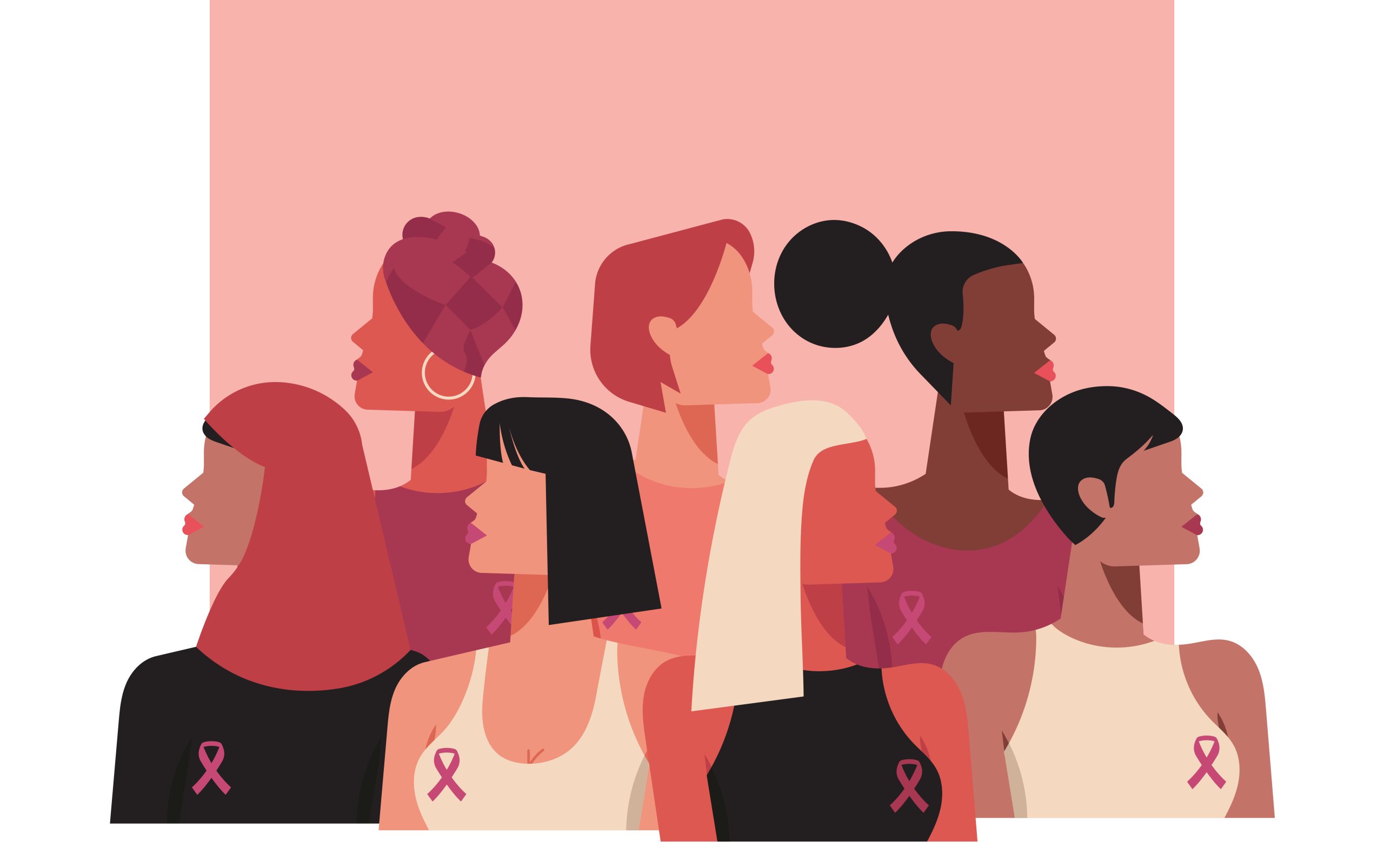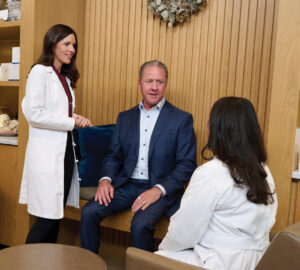While October brings with it the reds, yellows and oranges of autumn, it’s also a time to think pink for Breast Cancer Awareness Month. One in eight women will be diagnosed with the disease, meaning you’ll likely know someone touched by it—whether it’s yourself, a friend or a relative. It’s important to screen and conduct self-exams. The earlier breast cancer is detected the more successful treatment will be.
breaking down screenings
The most reliable way to find breast cancer early is regular screening. The age you should begin annual mammograms depends on your risk for developing the disease—risk factors include family history, race and lifestyle factors, such as drinking, weight and not having children. Women who are high-risk should begin annual mammograms at 30, so a breast cancer risk assessment should be completed before then.
The American Cancer Society’s recommendations for mammograms for women of average risk are:
- Between 40 and 54 screen with a mammogram every year.
- Women 55 and older can switch to every other year or continue with annual mammograms.
- Women should continue screening as long as they are in good health and expected to live at least 10 more years.
There are three common types of imaging done to detect breast cancer.
- Mammogram: This is a low dose x-ray of the breast that can detect changes years before physical symptoms develop.
- Breast MRI: The process uses radio waves and strong magnets to make detailed images of the inside of the breast. For certain high-risk patients, an annual MRI is recommended alongside a mammogram. While it can detect more cancers than a mammogram, it also is more likely to result in a false positive.
- Breast Ultrasound: These images are formed using sound waves and their echoes. It is not typically used for routine screening, but it can be used to look at lumps that can be felt but not seen on a mammogram. Unlike a mammogram, it can differentiate between solid masses and cysts or other fluid-filled masses, which are unlikely to be cancerous. It also is useful for screening women with dense breast tissue.
signs & symptoms
In its early stages, breast cancer may not have any symptoms, but some women do notice changes. These can be signs of other health conditions, so make sure to consult a doctor if you have any concerns.
- New lump in the breast or armpit
- Thickening or swelling of part of the breast
- Irritation or dimpling of skin
- Redness or flaky skin in the nipple area of the breast
- Pain around the nipple or in other areas of the breast
- Discharge other than breast milk, including blood
- Changes in the size or the shape of the breast
lower your risk
There is no sure way to prevent breast cancer, and many factors, such as genetics or age, are completely out of a person’s control. However, some simple lifestyle changes can lower your risk.
- Maintain a healthy weight. Weight gain is associated with a higher risk of breast cancer, especially in women who have experienced menopause.
- Keep active. Studies have shown that regular moderate to vigorous activity can lower breast cancer risk. The American Cancer Society recommends adults get 150 to 300 minutes of moderate activity or 75 to 150 minutes of vigorous activity a week.
- Moderate activity: These are exercises that cause a slight increase in heart rate and breathing. You should still be able to speak while doing the activity. Examples include a brisk walk, water aerobics and level bike riding.
- Vigorous activity: These activities should cause an increased heart rate, sweating and faster breathing. Examples include jogging or running, swimming laps and riding a bike fast or on hills.
- Limit alcohol. Alcohol increases the risk of breast cancer, even when consumed in small amounts. The American Society says it’s best not to drink at all, but those who choose to, should limit themselves to one drink a day, meaning 12 ounces of beer, five ounces of wine, or one and a half ounces of hard liquor.
- Eat a healthy diet. The impact of diet on breast cancer risk is something that is still being studied. It is unclear if consuming specific foods or cutting down fat intake has any effect. However, a diet high in fruits and vegetables has many health benefits and has been shown to reduce the risk of other types of cancer.
Sources: Centers for Disease Control and Prevention, American Cancer Society








